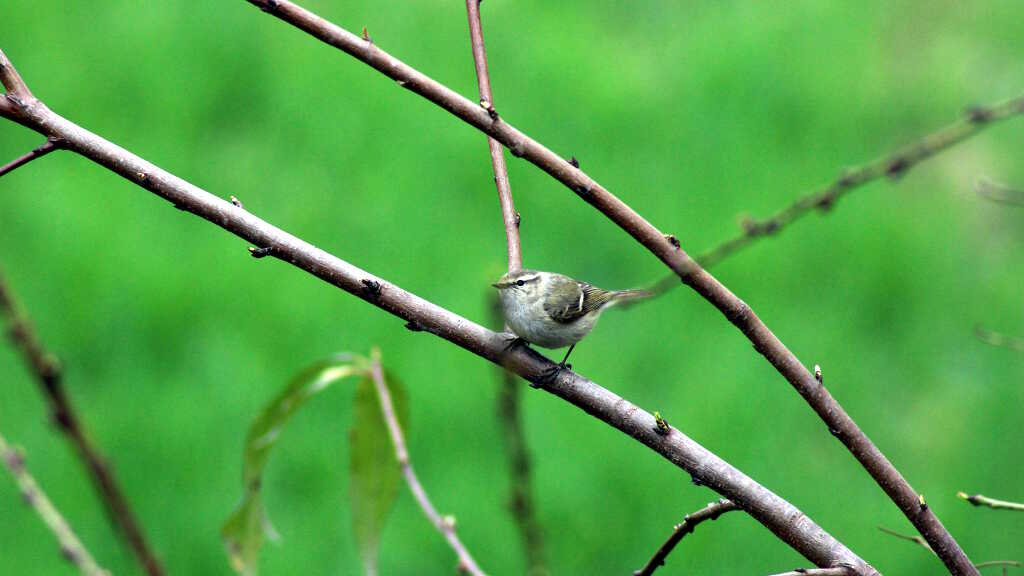
Phylloscopus humei (Hume’s leaf warbler)
The Hume’s leaf warbler (Phylloscopus humei) is a small, active songbird frequently spotted in the forests and alpine scrub of the Great Himalayan National Park (GHNP). This inconspicuous yet vocal species plays an important role in the park’s avian biodiversity and is known for its distinct high-pitched call, which can be heard across the treetops during the spring and summer months.
Physical Description
Measuring around 9–10 cm in length, Hume’s leaf warbler is olive-green above and pale yellowish-white below. It is marked by two pale wing bars and a faint supercilium (eyebrow stripe), which help differentiate it from other warblers in the region. Despite its small size, it is an energetic forager and is often seen flitting among branches.
Habitat and Range in GHNP
In GHNP, the Hume’s leaf warbler inhabits coniferous and mixed broadleaf forests, typically between 2,000 and 3,800 meters in elevation. During the breeding season, it is found higher up in the Himalayas, while in winter it descends to lower altitudes. The park’s untouched forest canopies provide ideal shelter and feeding grounds for this species.
| Common name | Hume’s leaf Warbler |
| Scientific name | Phylloscopus humei |
| Family | Phylloscopidae |
| Description | Hume’s leaf warbler is one of the smallest “Old World warblers”. Like most other leaf warblers, it has greenish upperparts and off-white under parts. With its long supercilium, crown stripe and yellow-margined tertial remiges, it is very similar to the yellow-browed warbler (P. inornatus). However, it has only one prominent light wing bar, just a faint vestige of the second shorter wing bar, and overall duller colors. It also has a dark lower mandible and legs. It has buffish or whitish wing bars and supercilium. The legs are normally blackish brown. It prefers coniferous forests and sub-alpine shrubberies for their breeding in an altitude of 2100-3600m and in winter it migrates & breeds below 1800m. |
Behavior and Diet
Hume’s leaf warblers are insectivores, feeding on small insects, spiders, and larvae found among leaves and bark. They are known for their agility and are rarely still, often flicking their wings and tail while foraging. Their vocalizations—short, high-pitched notes—are among the earliest bird songs heard in the Himalayan dawn.
Conservation and Observation
Although considered a species of Least Concern, the conservation of high-altitude forests is essential for the continued survival of migratory and breeding populations like the Hume’s leaf warbler. In GHNP, the species benefits from a protected and undisturbed environment, offering birdwatchers a great chance to observe it during its breeding season.



